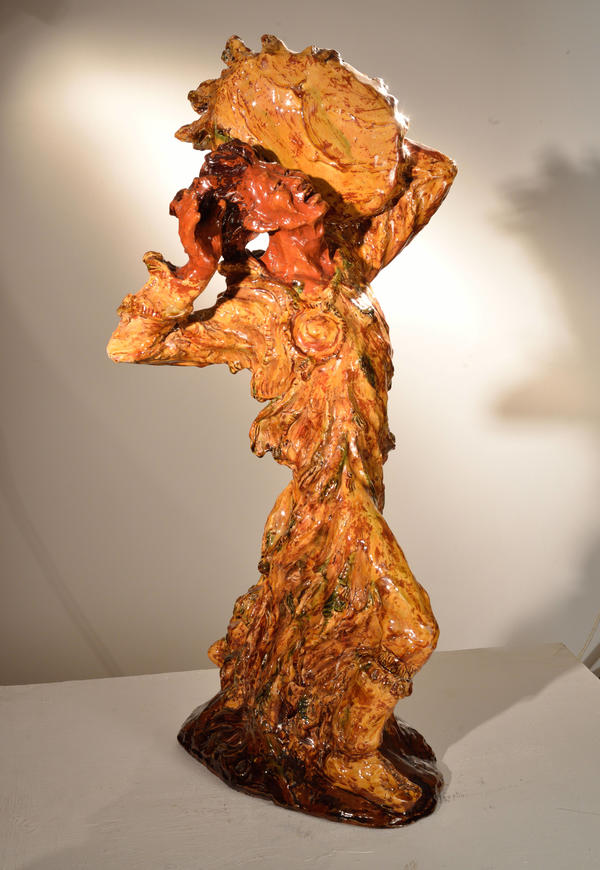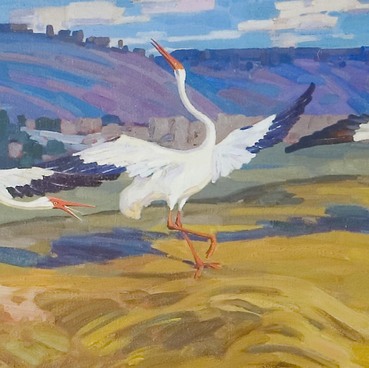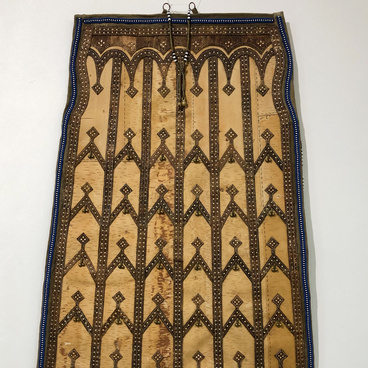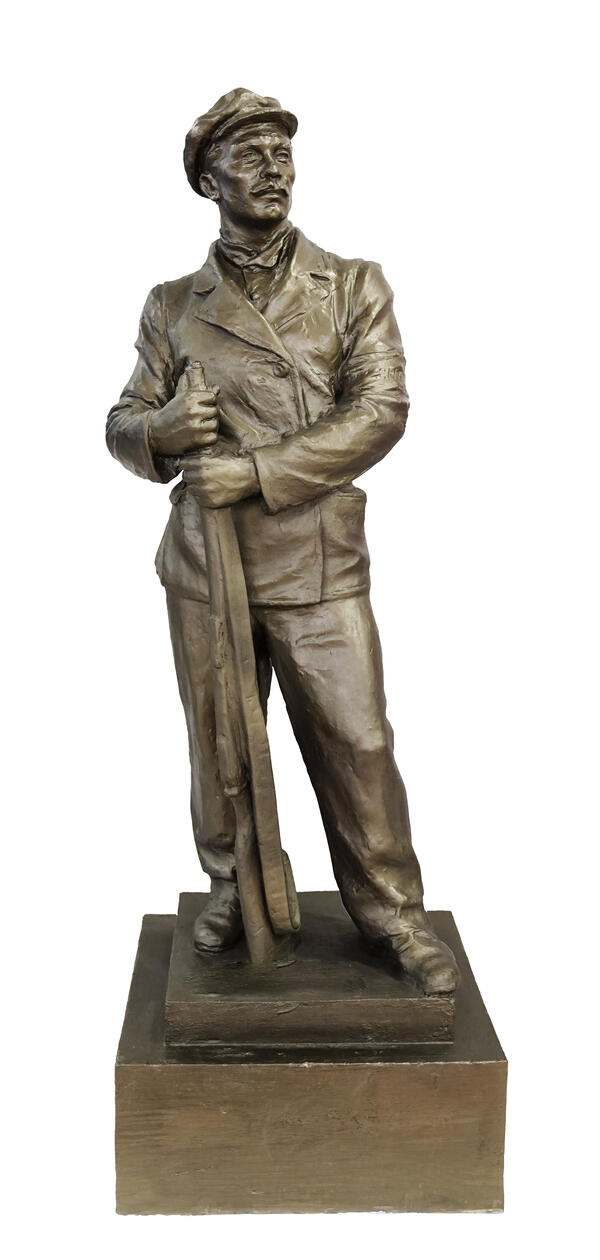Prokopiy Dobrynin, a sculptor from Yakutia, is well known far beyond the borders of the Republic. He studied at the School of Sculpture with the Leningrad Academy of Arts. After graduation, he decided to stay in Moscow. He was the author of the ‘Stone Flower’ and the ‘Golden Spike’ fountains at the central square of the Exhibition of Achievements of the National Economy (VDNH). The artist’s works participated in various exhibitions in Russia and abroad.
The sculptural composition “Sing to the Sun, Shaman!” was created by Dobrynin in 1966. He used majolica, which is a kind of ceramics made from coloured fired clay and covered with glaze. The author often used this technique during the post-war years and managed to unfold its rich decorative possibilities even in small-sized sculptures. While working with majolica he proved to be a talented colourist and skillful user of the most unexpected colour combinations.
“Sing to the Sun, Shaman!” depicts a mediator of the pagan cult. He is wearing traditional clothes symbolising a bird. Around the shaman’s neck, there is a plate in the form of an iron circle designating the Sun. Hems, sleeves and sometimes collars of shaman’s robes were decorated with fringe and pendants, which associated it with bird feathers. Numerous bells, tube-pendants and rattles on shaman’s clothes made a lot of noise while moving.
Usually, shamanic rituals were accompanied by loud songs and noises, that is why the central character of the sculpture is holding a tambourine – an important element of communication with the spirit world. In the culture of the Sakha people tambourines were identified with a riding animal for imaginary trips to other worlds.
For his whole life, Dobrynin lived and worked in Moscow, but always longed for his homeland – Yakutia. The main motive for his creative works was the theme of his native land. The artist often depicted folk images and stories, his works became more lyric and poetic. The sculptor was also interested in national tableware – he made choron-vases, kumis and tea sets, bowls and dishes. The Government of the Republic of Sakha (Yakutia) requested the artist to make a ceramic tableware with Yakut ornaments.




